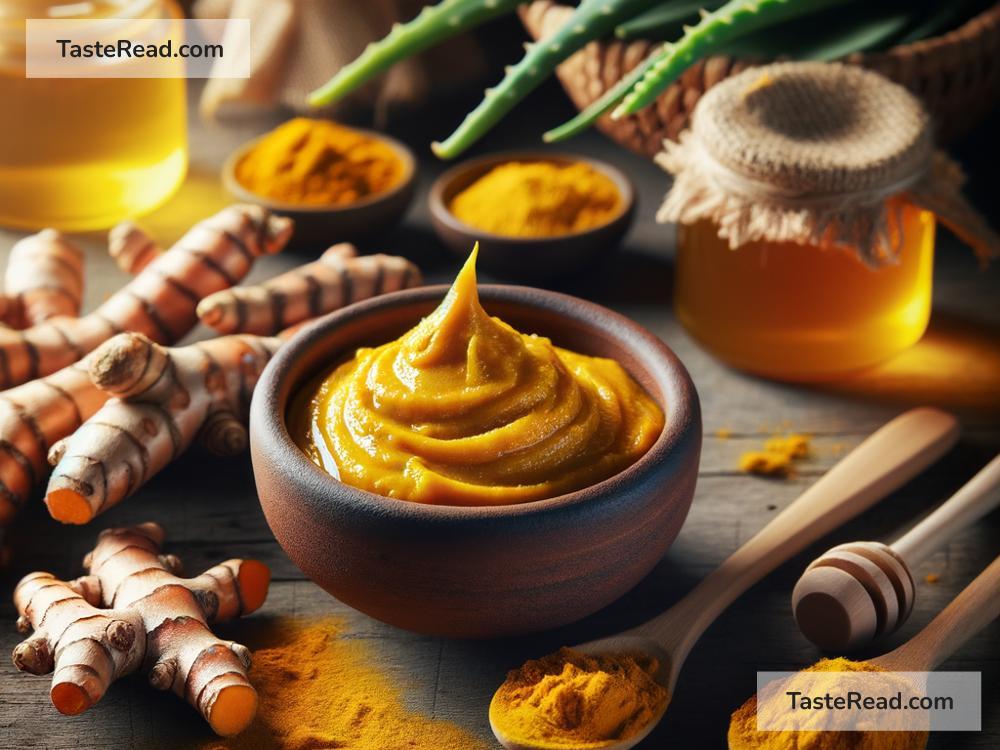Turmeric Paste: A Natural Remedy for Healing Wounds and Reducing Scarring
Turmeric, often called the “golden spice,” has been used for centuries in cooking and traditional medicine. Its bright yellow hue gives curries their vibrant color, but did you know it can also work wonders for healing wounds and reducing scars? In this article, we’ll take a closer look at turmeric paste and how it promotes faster recovery and healthier skin.
Why Is Turmeric Special?
The secret behind turmeric’s healing powers lies in a compound called curcumin. Curcumin is the active ingredient in turmeric, and it’s known for its anti-inflammatory, antibacterial, and antioxidant properties. These qualities make turmeric an excellent natural remedy for treating wounds and preventing infections.
When applied to the skin, turmeric paste creates a protective shield that helps wounds heal faster and minimizes the risk of scarring. Plus, it’s a budget-friendly and easily accessible solution compared to expensive creams or treatments.
Benefits of Turmeric Paste for Wounds and Scars
Here are some reasons turmeric paste is effective for wound healing and scar reduction:
1. Fights Infection
One of the biggest risks when you have a wound is infection. Bacteria can enter the wound and cause complications that slow down healing. Turmeric has powerful antibacterial properties that help fight off harmful microorganisms. Applying turmeric paste to a wound can keep it clean and reduce the chance of infection.
2. Reduces Inflammation
When you get injured, your body naturally reacts with inflammation. While inflammation is part of the healing process, too much of it can cause swelling and pain. Turmeric’s anti-inflammatory properties soothe the skin and reduce redness and swelling, helping your wound feel better as it heals.
3. Speeds Up Healing
Turmeric boosts the production of growth factors in the body, which encourages new tissue formation. This means wounds can close faster, reducing the overall recovery time.
4. Prevents Scarring
When a wound finally heals, it may leave behind scars that can linger for years. Curcumin in turmeric helps stimulate collagen production, which is essential for smooth and healthy skin. It also promotes even skin pigmentation, reducing the visibility of scars over time.
How to Make Turmeric Paste at Home
Making turmeric paste is simple and inexpensive, requiring just a few basic ingredients. Here’s a step-by-step guide to preparing it:
What You’ll Need:
- Turmeric powder: 1 teaspoon (organic turmeric is ideal)
- Honey: 1 teaspoon (for its antibacterial and moisturizing properties)
- Milk or water: Enough to create a paste-like consistency
Instructions:
- In a small bowl, mix the turmeric powder and honey. If you prefer, you can substitute honey with aloe vera gel for added cooling effects.
- Gradually add milk or water to the mixture until it forms a smooth paste. It should be thick but spreadable.
- Your turmeric paste is ready to use!
How to Apply Turmeric Paste
Follow these simple steps to apply turmeric paste for wound healing or scar reduction:
- Clean the area: Before applying the paste, wash the wound or scar gently with water and pat it dry with a clean cloth.
- Apply the paste: Use clean fingers or a cotton swab to apply a thin layer of turmeric paste to the affected area.
- Cover it up: Depending on the wound’s location, you can cover it with gauze or a clean bandage to prevent the paste from rubbing off.
- Leave it on: Allow the paste to sit for 20–30 minutes. Afterward, rinse it off with lukewarm water. For scars, you can leave the paste on overnight for deeper absorption.
- Repeat daily: Repeat this process once or twice a day for best results.
Side Effects and Precautions
While turmeric is generally safe, there are a few things to keep in mind:
- Skin Sensitivity: Some people may have sensitive skin and experience mild irritation or itching when using turmeric paste. Always do a patch test on a small area of skin before applying it widely.
- Yellow Staining: Turmeric can temporarily stain the skin or clothing due to its strong pigments. Wash the area thoroughly and wear old clothes to avoid stains.
- Not for Open Wounds: Avoid applying turmeric paste directly to open or deep wounds. It’s best to wait until the wound begins healing before using turmeric on the skin.
Other Uses of Turmeric Paste
Turmeric isn’t just for wounds and scars. It’s also popular in skincare routines to treat acne, dark spots, and uneven skin tone. Its ability to brighten and rejuvenate the skin makes it a versatile ingredient worth keeping around. You might even find it in store-bought creams and masks!
A Natural Ally for Your Skin
Turmeric paste is a simple, natural remedy that comes straight from your kitchen. It helps accelerate wound healing, prevent infections, and reduce scarring—all without harsh chemicals or costly treatments. However, remember that turmeric works best for minor cuts, scrapes, or scars. For severe injuries or deep wounds, consult a healthcare professional first.
Incorporating turmeric into your self-care routine can be a game-changer for healthier skin. Next time you face a scrape or scar, consider giving turmeric paste a try. With a little patience and consistency, you’ll be amazed at how this golden spice can help restore your skin’s natural glow.


